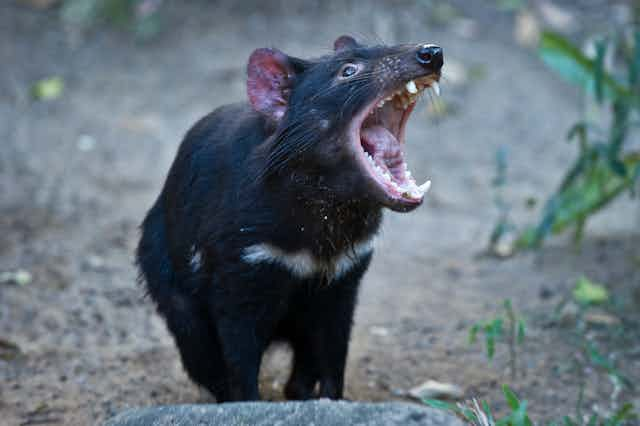Reintroduction programs are key initiatives for re-establishing or re-stocking animal populations, and while some are successful, many, unfortunately, are not.
Endangered and critically endangered animals for reintroduction are commonly sourced from captive-breeding programs, as has been the case in the past two weeks with the release of Tasmanian devils and orange-bellied parrots in Tasmania.
Compared to reintroduction programs that source animals from the wild, captive-sourced programs tend to have lower success rates, and conservation success stories in these circumstances are hard won.
However, these programs also have the most to gain. Improved success here could have a real impact and result in an increase in the number of conservation success stories.
Why can reintroduction programs fail?

There are a variety of reasons why a reintroduction program may not succeed. Although, a considerable factor when comparing reintroductions of wild-caught and captive-bred animals is the lack of “life skills” in the animals.
A recent review of reintroduced mammalian carnivores found captive-bred animals were much more susceptible to starvation, disease and the inability to avoid predators, compared to their wild-caught counterparts. Similar trends are also common across other animal groups, such as birds.
Many captive-breeding programs have acknowledged the importance of learning and experience for their animals, and have responded by:
- housing them in more realistic environments
- attempting to teach them “life skills” prior to release
- mixing wild- and captive-bred animals in reintroduced populations.
What about animal personality traits?
Like humans, individual animals have recognisable behavioural characteristics, or “personalities”.

Research on this topic has uncovered a variety of personality traits in a wide variety of animals. For example, some animals within a population are inherently “shyer”, or more risk averse, than others who are “bolder” or more risk prone.
Importantly, these traits have been shown to influence how an individual copes, or even survives in a given circumstance.
For example, bolder animals that take more risks may be more successful than a shyer individual in a social situation, such as competing for access to food, but also may be less successful when faced with danger as they may take more risks.
Considering animal personality in conservation efforts
Captivity is obviously different from the wild, and captive breeding, while sometimes the only option, has challenges to overcome.
Selection for animals that fare well, and reproduce, occurs in all circumstances. Animals that live and happily breed in captivity tend to have different behavioural characteristics. In a captive population of cheetahs, breeding individuals were found to be less tense and fearful than those that did not breed.

Selection (intentional or not) of certain behaviours may also have unexpected consequences that could affect the likelihood of a successful reintroduction of a captive animal population to the wild.
In a captive population of coonstripe shrimp, individuals that did not struggle when being handled survived better, which resulted in a tamer population. But in addition to becoming tamer, the captive population of shrimp also grew faster, and had less pigment than their ancestors.

As personality traits can be inherited, breeding programs can unintentionally and unknowingly select for personality traits that are suitable for a captive environment, but may not do as well when released into the wild.
Also, recent studies are suggesting that a variety of personalities can complement one another and confer benefits to the individuals.
As I have written about previously, bolder wild chacma baboons are better at finding new food sources than shyer baboons when information about the quality of the food in the area is unreliable.
Overcoming personality issues
While not always adopted, there are strategies that conservation efforts can take to minimise these problems.
Most notably, many of these types of problems can be overcome through providing experience in a more biologically realistic environment prior to reintroduction. This includes “teaching” or providing experience finding food, shelter and avoiding predators.
However, especially with endangered animals, nothing can be done without a population that will breed successfully in captivity, and this is obviously a priority.
If breeding is achieved, methodological assays (which provide an evolutionary and ecological framework for determining personality) have been developed which can be used in captive populations to monitor the variation in behaviour of a captive population, and better inform decisions about the populations for reintroduction.
The study of animal personality is a thriving field in behavioural and evolutionary ecology, and many studies are taking to the field to investigate how personalities affect survival.
Surely, application of these findings to captive breeding programs could further equip conservation efforts to increase their success – which could make all the difference for endangered and critically endangered species.

